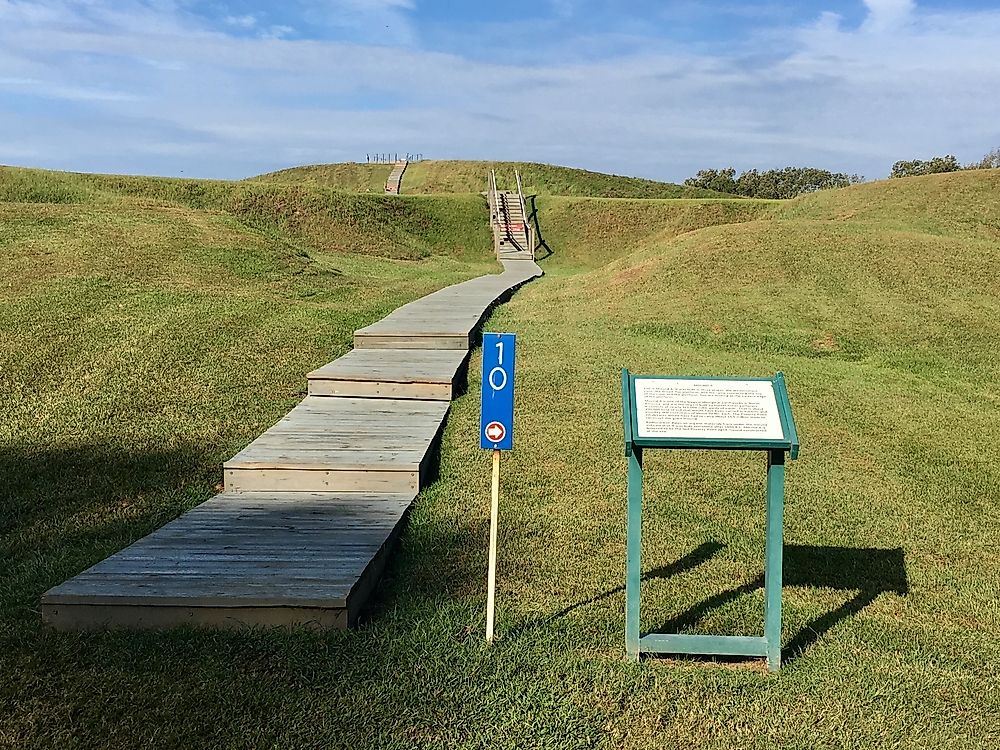Poverty Point - Unique Places in North America

Description
Poverty Point State Historic Site is a prehistoric Native American site located north of Louisiana in the United States. The area was designated as a national historic site in 1962 and accredited as a national monument in 1988. Poverty Point monument includes the biggest earthen mounds in America, made up of six earthen ridges organized in a crescent shape, five mounds, and a central plaza. It is believed the site was created and used for ceremonial and residential events by a society of indigenous hunter and gatherers that inhabited the region.
Habitat
A city with a population of about 5,000 people thrived at Poverty Point from 1700 BCE until 700 BCE. The population was mainly comprised of hunters and gathers that descended from native North Americans who migrated through the Bering Strait and bridge 15,000 years ago. They evolved into a highly sophisticated and distinct society, different from their immigrant descendants and from the early inhabitants of the Lower Mississippi basin. Due to the different seasonal variations of the region, the society became highly dependent on fishing, hunting and gathering as their main sources of food. Their diet was composed of small animals like deer, rabbits, fish, aquatic roots, berries, and fruits, which were prepared in large pits and hearths that represented earth ovens.
Uniqueness
Unlike other prehistoric sites throughout the world, such as the Stonehenge (England) and the Great Pyramids at Giza (Egypt) that were built by agriculturalists, Poverty Point is unique since it was constructed by a society of hunters and gatherers, which is a rare phenomenon. The particular layout of the mound complex is also unique, as the naturally raised topography above the Holocene alluvial deposits from the Mississippi basin provided a secure place for human settlement, particularly since it was susceptible to floods. The extraordinary elements that make up the complex, coupled with the longitudinal and latitudinal organizations aligning to the topography, are a clear example of how natural resources can be manipulated to construct monumental landscapes.
Tourism
The national monument is managed by the State of Louisiana as a state historic site and a UNESCO’s World Heritage site. It is one of the few pre-historic tourist attractions in North America and attracts archeologists and tourists from around the globe. The monument was opened to the public in 1972 and remains open every day between 9 a.m. and 5 p.m., except Thanksgiving, Christmas, and New Year’s Day. The federal and state government of Louisiana built a museum highlighting the tools, vessels, and unique artifacts, including thousands of hand-built clay stones, found at the site that were used for convection cooking.
Threats
Erosion of Poverty Point is the greatest challenge in terms of conservation of the monument. The forest of indigenous trees in particular is the ultimate threat to protecting the earthwork, as wind and uprooted roots lead to erosion during heavy rains. Conservation efforts include uprooting the trees replacing them with grass as a means of limiting erosion.











